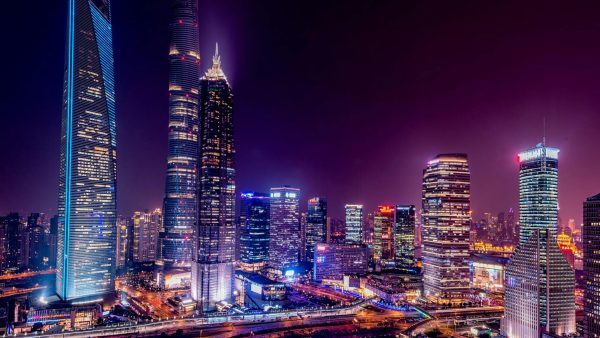Today we have world rankings, thematic indexes, certifying and specialised companies, cases and, above all, the interest of the public sector and society in advancing this agenda.
The aim of this article is to give a brief overview of the subject and to understand how far we have come and where we are going. A journey through the most impressive Smart Cities initiatives on the planet and their impact on society. The starting point is a simple question:
Why should a city be smart?
This is a critical point in understanding Smart Cities. After all, simply filling a city with the latest technological paraphernalia does not seem sensible or even feasible.
Although investments in excess of $1 trillion are expected in the coming years, municipal budgets are tight. Moreover, according to UN estimates, 68% of the world’s population will be living in urban areas by 2050. Therefore, there is an urgent need to make really smart decisions for cities. And technology is only a means to this end, not the end.
What should drive a smart city strategy in the first instance are the needs of citizens, not technological hype. That’s why this post starts from the problem to the solution, as it should, and not the other way around, as it usually is.
What are the needs of a city?
It is impossible to answer this question without resorting to the comforting and contradictory ‘it depends’. The conditions of cities are not very similar to each other, especially if we consider a global context. This is precisely why it is so difficult to precisely define a smart city. Fortunately, today there are many sources that help us understand what a city needs.
For example, the ISO 37122 standard. It specifies and establishes definitions for a set of smart city indicators. There are more than 100 indicators divided into 19 themes: economy, education, energy, environment, climate change, governance, health, safety, security, telecommunications, transport, urban planning, sewerage, water, among many others.
To illustrate how the indicators are defined, I have highlighted a few:
- Percentage of city streets and roads covered by real-time online traffic alerts and information.
- Percentage of the city’s population with access to real-time public warning systems on air and water quality conditions.
- Percentage of public lighting points managed by a remote management system.
- Average downtime of the city’s IT infrastructure.
- Percentage of the city’s population with access to sufficiently fast broadband.
- Percentage of public car parks equipped with real-time availability monitoring systems.
- Percentage of smart traffic lights.
- Percentage of the municipal budget allocated to support actions, devices and assistive technologies for citizens with special mobility needs.
- Percentage of urban services that are accessible and can be ordered online.
- Percentage of households with smart energy and water meters.
- Percentage of city area covered by digital surveillance cameras.
- Annual number of online visits to the municipal open data portal per 100,000 inhabitants.
- Average response time to calls made through the city’s non-emergency call system (days).
Note that the indicators are practical and straightforward, and adhere to other initiatives, such as the UN Sustainable Development Goals, which are an excellent guide for planning initiatives. However, while the task is arduous and the challenges enormous, there are other important layers that influence the choice of smart city projects.
What else needs to be considered?
In addition to current social needs, other aspects of a city have to be taken into account. An interesting point of view comes from Chinese architect Kongjian Yu. According to him, urban planning should not be based on population and economic growth, as is the case today.
For Yu, the identity of each city is already given by its nature and its history. In other words, it is the environment that should lead the way. ‘This should be the basis of urban development and take precedence over all other planning. I like this approach because it places the natural characteristics of the city as the primary factor in defining strategies.
In the opinion of Brazilian expert Vicente Soares Neto, cities of any size have a great opportunity:
“The questions that should be asked, from the perspective of municipal macroeconomics, are: what should we do to make our products and services stand out? When they mention the name of our city, what will outsiders remember?
According to Neto, every smart city has a vocation, and that vocation is the ‘economic principle of its development’.
Needs, geography, climate, history and vocation
There is no point in seeking unanimity or consensus, but we now have enough practical and theoretical elements to better understand the initiatives that have already been established.
What are the Smart Cities initiatives?
There are countless smart city projects. I have listed a few that can illustrate our discussion:
Tokyo – Energy Efficiency
In 2011, Japan suffered one of the biggest nuclear disasters in history. In addition to all the terror experienced at the time, there was a consequent reduction in the country’s power generation. Since then, energy efficiency and safety have become priorities.
As a result, numerous public policies have been put in place, including subsidising private initiatives. The Ministry of Economy, Trade and Industry has developed its Smart Community concept, which includes intelligent transport systems, electric vehicles and smart homes.
Residences such as Mitsui Fudosan’s Park Tower Shinonome include energy storage systems, an electric vehicle charging station, solar panels, an anti-seismic structure and disaster support facilities.
Tokyo has also adopted smart grid and smart home technologies , along with renewable energy systems to manage energy sustainably. Toyota has developed its i-Road technology, an electric car-sharing service, and Kansai EPCO has been involved in several smart meter projects.
Dublin – OpenData
Dublin has a highly diversified economy. Situated on the Dublin Bay of the Irish Sea, with a prime location for international trade, the city has attracted investment from large technology companies thanks to financial and tax incentives.
Today the city is the European headquarters of companies such as Google, Facebook, Microsoft, Accenture, Citibank, Pfizer, KPMG and Deloitte, which has intensified the culture of innovation and made the city one of the world leaders in IoT, Big Data, Information and Communication Technology (ICT), healthcare innovation, energy efficiency and cloud computing.
In order to maintain transparency, increase productivity and encourage public participation in city planning, Dublinked, an open data portal that provides free access to information for all economic actors, was created.
The programme enables data sharing and collaboration between researchers, developers, entrepreneurs, scientists and analysts so that they can work more effectively.
Dublinked also allows APIs to be used to access the data directly, with a view to developing solutions for the city. Some applications developed in collaboration with startups show the impact of the initiative:
- Dublin Cycling Buddy – Uses data on the routes most used by cyclists to develop infrastructure such as cycle lanes and signage. In addition, the app suggests quieter and safer routes for cyclists.
- Dublin City Air & Noise website – The air quality and noise monitoring data, when made public, enabled citizens to take corrective action. In addition to the 37 monitoring stations, a partnership with Google, which ran its Street View cars equipped with air quality and noise sensors around the city for a year, contributed to the solution.
Honk Kong – 5G and transport innovation
Covid-19 has had a huge impact around the world. In Hong Kong, the effect was no different, with drastic reductions in GDP and a change in citizen behaviour that continues to this day.
However, some initiatives attracted attention during this period. Robust investment and rapid public adoption of 5G mobile connectivity technologies have enabled the development of innovations in public services.
With 5G coverage reaching 99% of the population and covering places such as railway lines, roads, highways and tunnels, Hong Kong has brought about a revolution in transport services:
- Transport and traffic information, where more than 1,200 sensors and monitors on major roads generate real-time data and also enable the use of Big Data analytics to drive improvements.
- Visibility of public transport routes, providing real-time information to users on apps and screens at stations.
- Real-time online parking availability information.
- Remote roadside assistance, via video calls in 4k resolution.
Nairobi – Energy and water control
Nairobi is the capital and largest city in Kenya. Thanks to its well-publicised nature tourism, it is known as the Safari Capital of the World. Despite its important role in the African economy, Nairobi has a low and declining GDP, which calls for greater efficiency.
One of the Smart City initiatives adopted was the widespread use of IoT sensors to monitor the energy grid and water supply.
- Energy – Expected to save around $650 million over the next 6 years, mitigating power leakage, energy theft and falling grid performance.
- Water – Expected benefits are more accurate restoration of the pipe network, better water pressure management, volumetric tariffs instead of flat billing, more intelligence in distribution and consequent reduction of operating costs and significant sustainable impact.
Hangzhou – City brain and digital urban management system
The Chinese city of Hangzhou has more than 12 million inhabitants, 83% of whom live in urban areas, an increase of 10 percentage points in the last decade alone, requiring robust and intelligent solutions for public management.
It is against this backdrop that Hangzhou City Brain (HCB) emerged, a centre that functions as a Big Data platform to help manage the city’s infrastructure and public services.
The HGB performs 3 main functions:
- Computingcapacity – Distributed computing and data warehousing that generates artificial intelligence models at scale. These models help Command and Operations Centres access, compute and analyse real-time imagery and information from across the city.
- Algorithm Management – Provides computational insight into algorithms for City Brain, such as automatic object detection, recognition and categorisation.
- Data Governance – Provides insights for various domains, such as transport, urban governance, public services, security, business development, health, energy and education. Data is extracted from government entities, APIs, IoT devices, cameras, smart traffic lights, etc.
As a result, City Brain has benefited more than 11 million people with the services it offers. It has doubled policing capacity, significantly reduced traffic jams, improved emergency incident response efficiency by 50% and reduced response times by 7 minutes.
Another project derived from this intelligence is the digital urban management system, which allows citizens to collaborate in real time, making mobile phone users the eyes and ears of the city. Through the Tie Xin Cheng Guan app, users can report non-emergency situations.
In the first six years of its launch, the app received more than 19 million reports, with an impressive 99.7% resolution rate. The initiative has helped address public management issues with greater agility and a significant reduction in operational costs.
Helsinki – Smart Kalasatama
Helsinki, the capital of Finland, with some 700,000 inhabitants, is among the world’s leading smart cities. A clear sign of this maturity is the Smart Kalasatama project, a living laboratory for the collaborative creation of urban infrastructure and service solutions.
Located 6 minutes from the city centre, the 175 km² area has been transformed into a residential district to test state-of-the-art solutions such as smart waste management, smart lights, smart schools, health and wellness centres, solar energy, electric car sharing and even an artificial surf park.
The initiative has more than 200 supporters, including citizens, politicians, researchers and entrepreneurs, which has stimulated public-private collaboration and in the first two years has tested 21 solutions with the participation of more than 30 companies.
New York – DAS
The largest city in the United States is considered one of the world leaders in smart city initiatives. Solutions aimed at transparency, governance, sustainability and mobility are recognised worldwide.
The Public Safety solution is worth highlighting. This is DAS, a solution that aggregates and analyses data to ensure safety and prevent criminal activities.
In collaboration with Microsoft, the NYPD uses information from an extensive network of sensors, databases, devices and infrastructures that provide specific information. This centralised repository helps the police make tactical and operational decisions.
To give an idea of the impact, 75% of the shots fired and detected by DAS sensors were not reported by other sources. The city estimates that DAS has been instrumental in a 6% drop in crime in the first 4 years.
Shanghai – Planning
Shanghai has ambitions to establish itself as the world’s leading technology megacity, with the aim of increasing competitiveness and attracting investment and talent.
What is striking about the adoption of smart city solutions is the planning that went into bringing them to their current level. The initial goal of the plan was to develop a state-of-the-art communications network infrastructure to support future initiatives.
The plan was divided into three phases and progressed in leaps and bounds:
- Smart City Action Plan 2011-2013 – Unlike other Smart City initiatives, which tend to focus on the application layer first, Shanghai emphasised the importance of establishing a robust network first. Fixed and mobile coverage, including broadband, 3G, LTE and Wlan, was the initial focus of the plan, as well as data centre infrastructure, hardware and software to support large volumes of data.
- Smart City Action Plan 2014-2016 – The second phase focused on developing and improving operations and management with Big Data, IoT, cloud computing and network security. At this time it also advanced the development of applications for transport, healthcare, education and digital administration.
- Smart City Action Plan 2017-2019 – In 2016, Shanghai launched its Smart City vision plan, which envisaged the development of initiatives divided into smart living, smart economy, smart city management and smart government. In this phase of the plan, the aim was to integrate platforms and applications and leverage all existing infrastructure capacity, constantly upgrading and optimising.
Edinburgh – SMILE
Edinburgh, Scotland’s capital city, has a highly skilled population, with over 50% of working age people having completed tertiary education. This continues to be an important driver of its economic development.
One of the city’s most striking initiatives is SMILE (Smart Meters for Independent Living).
To give more autonomy to people with special needs, a way has been created for the caregiver to intervene only when necessary.
For this, smart home meters have been developed with the help of AI and machine learning to observe daily routines (with consent) and detect unusual behaviour.
For example, a sudden change in meal times or longer than usual baths can indicate that an accident has occurred. Family and caregivers are alerted to the possibility and can check that all is well.
What are the paths to smart cities?
A brief acquaintance with these initiatives is enough to realise that there are some ways to develop smart cities:
- Management – To become a reality, planning needs a vision and concrete actions from public managers, detailed in documents such as the Government Plan and the Municipal Master Plan. In other words, something tangible, a formal commitment, not just words. Moreover, it cannot be an isolated action by municipalities.
- Government – Coordinated action between all public spheres is essential for actions to be cohesive and for the benefits for the population to be real and lasting. Subsidies and incentives must be made possible and, as we have seen, this planning must be long-term, as well as providing for infrastructure to support the initiatives, and be sustainable and inclusive.
- Business – According to an OVUM study, around 70% of smart city initiatives have been made possible through public-private partnerships (PPPs). The private sector is extremely important in making dreams come true. Therefore, the issue cannot just be a marketing strategy for these companies; they need to be aware of the fundamental concept of a smart city.
- People – The effective participation of citizens is crucial to any of these strategies. That is why it is important that they become more and more aware of the possibilities and really get involved in their city’s initiatives.
We can only know the pathways, because there is no end point for Smart Cities. Technology evolves, our needs change.
What is most important in this reflection is that knowledge on the subject, whether technical or conceptual, is seen as one of the main challenges for the development of solutions in cities.
Download the original version here (Portuguese/Brazilian)









